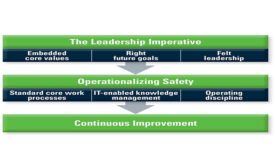Deborah Grubbe
Deborah Grubbe is owner and president of Operations and Safety Solutions, a global consultancy that works with various industries. Deborah is a former member of the NASA Aerospace Safety Advisory Panel, and worked on the U.S .Chemical Weapons Stockpile Demilitarization. She serves on numerous advisory boards and is an Emeritus Member of the Center for Chemical Process Safety.
ARTICLES
Part 2 of 2
Evaluate three critical aspects of your operation
Read More
Want a sustainable safety culture?
Audit these 11 operational discipline essentials
August 23, 2018
An actionable safety plan: Part 3 – Sustaining safety success
This is the third in a three-part series
April 9, 2018
An actionable safety plan: Part 2 – Establishing core actions
This is the second in a three-part series
January 19, 2018
An actionable safety plan: Part 1- Improving safety performance
This is the first in a three-part series
October 17, 2017
Become a Leader in Safety Culture
Build your knowledge with ISHN, covering key safety, health and industrial hygiene news, products, and trends.
JOIN TODAYCopyright ©2025. All Rights Reserved BNP Media.
Design, CMS, Hosting & Web Development :: ePublishing





